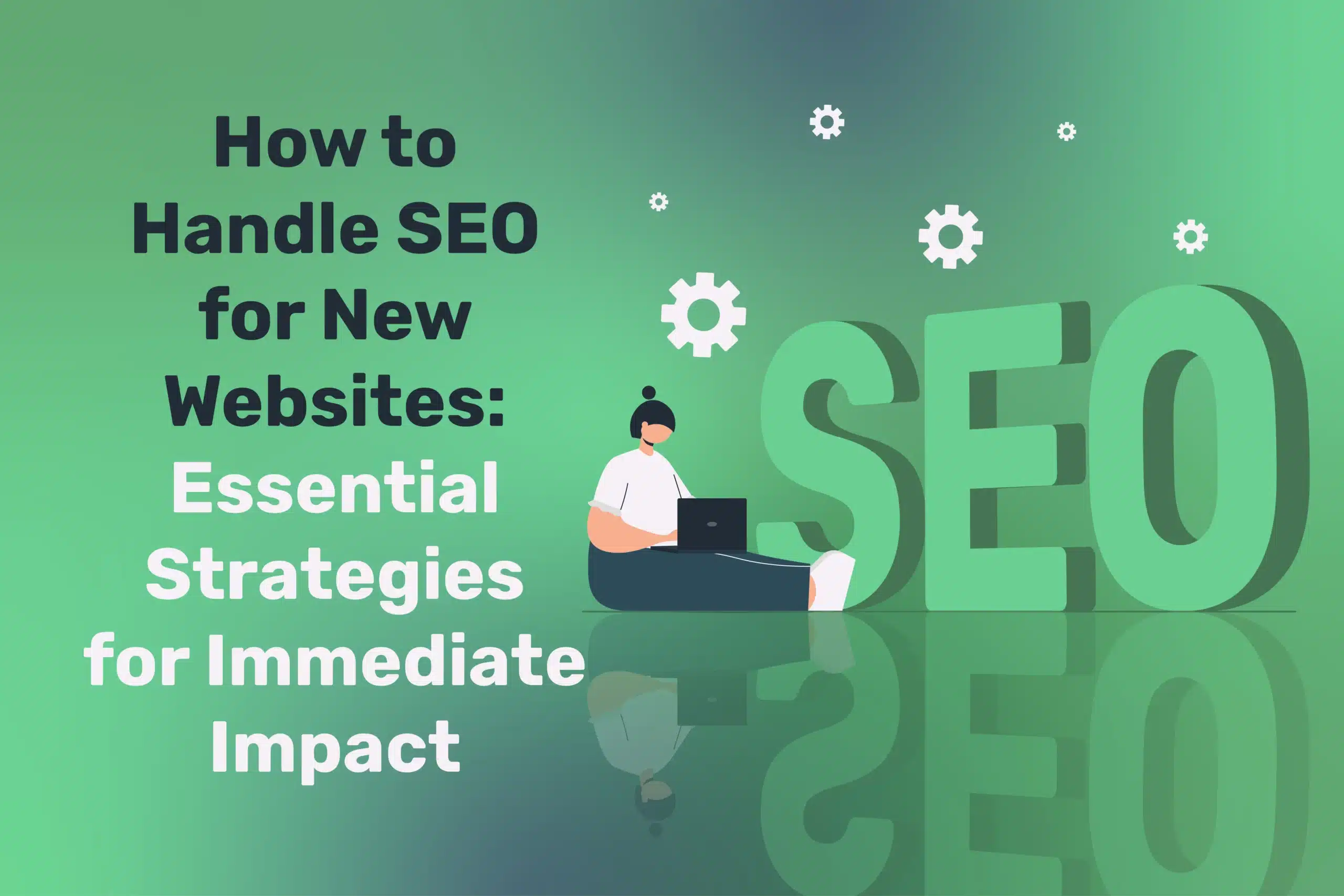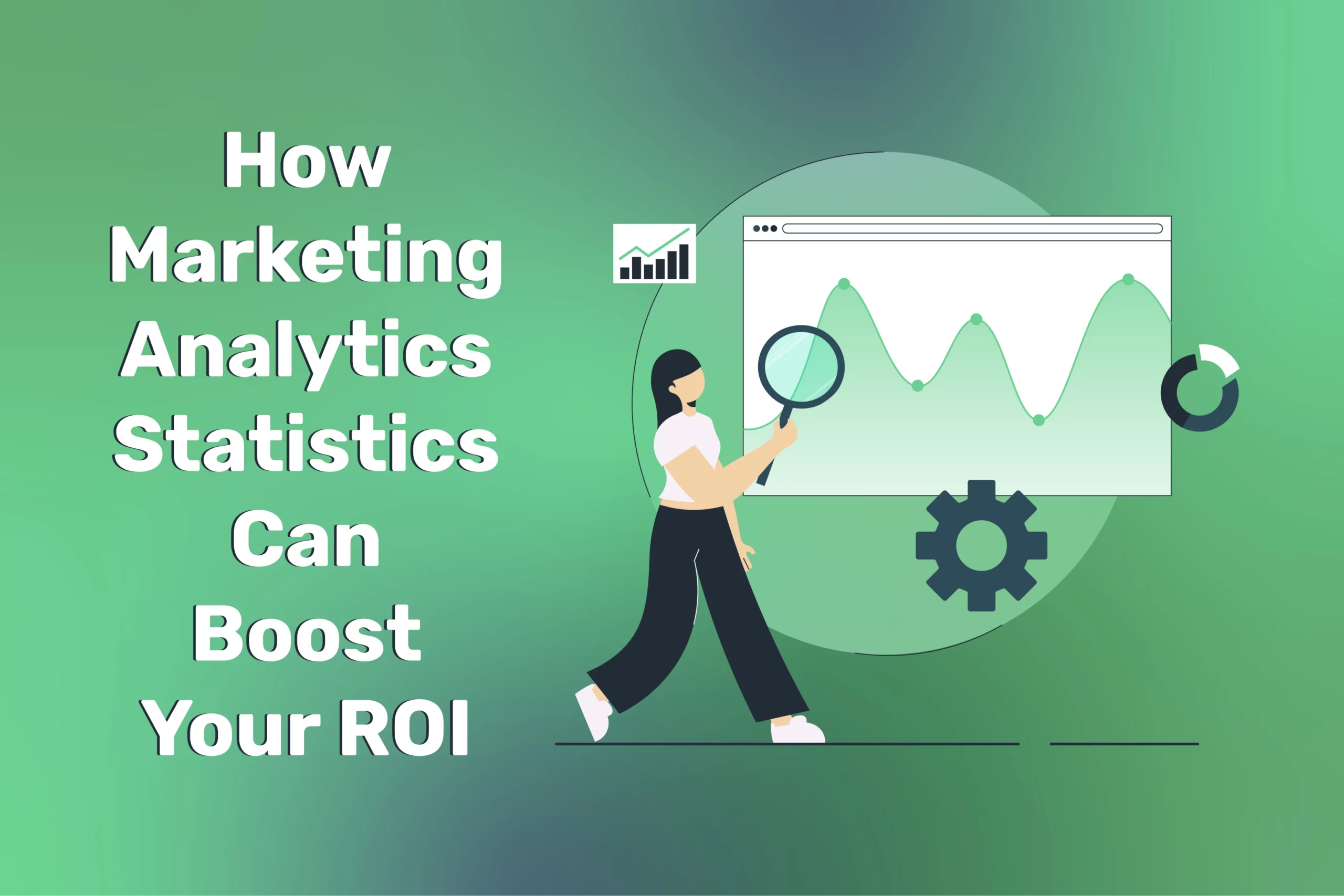
Search Generative Experience (SGE) and AI-Driven SERPs: How to Optimise for an AI-Augmented Future
Table of Contents
Search engines are no longer just listing results: AI-based systems now synthesise information directly in the SERP, offering immediate answers or “snapshots” rather than a simple page rank. Google’s Search Generative Experience (SGE) is a prime example, testing how advanced AI can respond to queries with comprehensive summaries, referencing multiple sources. This shift promises more user convenience but also raises questions about site traffic and brand visibility.
In this article, we’ll explore SGE, why it matters, and how content creators should adapt their SEO strategy to remain visible despite AI’s summarised SERPs. We’ll examine potential synergy—like how to appear as a credited source in generative answers—and discuss whether SGE could diminish clicks on traditional organic listings. By preparing now, you’ll future-proof your website in a search world increasingly shaped by AI.
“SGE challenges the notion that users always click to read full articles. Sites must now present content in ways AI can interpret, but still entice visitors to learn more,” notes Ciaran Connolly, Director of ProfileTree.
What is SGE (Search Generative Experience)?
Search generative experience (SGE) is Google’s AI-powered search evolution, integrating generative AI to deliver more intuitive, conversational, and comprehensive results. Instead of traditional search listings, SGE provides AI-generated summaries, contextual insights, and follow-up query suggestions, making search more interactive. This shift impacts SEO by prioritising well-structured, authoritative content that aligns with user intent. Understanding SGE is crucial for optimising content to maintain visibility in this AI-driven search landscape.
Google’s AI-Enhanced Q&A
SGE is Google’s experimental approach to embedding AI-driven summaries atop the search results. Rather than listing just 10 blue links, it presents a short, coherent answer gleaned from multiple sources. For instance, if someone searches “Best ways to reduce plastic waste at home,” the SERP might show a textual summary referencing lifestyle tips from several sites.
How It Differs from Standard Snippets
Whereas a typical featured snippet or knowledge panel references content from a single domain, SGE merges data from multiple pages, creating a consensus-based response. This potentially reduces the impetus for users to click through—the answer is right there in the SERP.
Evolutionary Step from “10 Blue Links”
Traditional link-based results remain, but might be pushed lower. As Google refines SGE, more queries get an AI block summarising the main points. The user’s next steps—clicking into an “expanded” summary or an external link—depend on how well the summary meets their intent.
The Impact on Traditional Website Traffic
With SGE delivering AI-generated summaries directly in search results, traditional website traffic may see shifts as users find answers without clicking through. While informational queries might lead to fewer visits, high-value content that adds depth beyond AI summaries can still drive engagement. Websites must focus on expertise, unique insights, and interactive elements to remain relevant. Optimising for SGE means adapting to a search landscape where visibility depends on structured data, authoritative content, and user-focused experiences.
Zero-Click Trend Acceleration
Zero-click searches have been rising for years, with direct answers (weather, conversions, definitions) keeping users on Google. SGE intensifies this because more complex queries—once needing a full article—may see partial resolution in the SERP.
Brand Visibility at Risk?
If your site’s unique content is consolidated into an AI summary, the user may glean enough info without visiting your domain. This could reduce overall visits, especially for top-of-funnel queries. If brand credit is minimal (“info derived from 2-3 sites”), you might lose mindshare.
Opportunities for Credited Mentions
SGE often lists the sources that contributed. If your site stands out as authoritative—due to strong E-E-A-T signals—you might appear as a reference link. This can drive brand recognition. Users exploring more detail might follow those references, especially on extended queries.
“Though SGE can hamper routine clicks, it also highlights the best authoritative content. If you rank among them, your brand benefits from direct AI-driven mentions,” says Ciaran Connolly.
Optimising Content for an AI-Augmented SERP
As search evolves with AI-driven results, optimising content for an AI-augmented SERP requires a strategic approach. Structured data, clear headings, and well-organized information help search engines interpret and feature content effectively. Prioritising authoritative, in-depth insights that go beyond AI-generated summaries increases the chances of earning clicks. Additionally, enhancing user engagement with interactive elements, multimedia, and conversational content aligns with the new search experience, ensuring sustained visibility and traffic.
Structured Content for Easier Parsing
AI summarisation thrives on well-structured pages. Use short paragraphs, bullet lists, headings (H2, H3) that clearly label each subtopic. If your points are scattered haphazardly, the AI might skip or misinterpret them.
Tip: Insert Q&A style sections—FAQ or “Key Points”—that SGE can readily interpret.
Factual Accuracy and Citations
If your site content is uncertain or contradictory, SGE might disregard it. Provide references: official data sources, quotes from experts, or robust disclaimers. This fosters trust signals—the AI sees that you’re consistent and well-supported, improving your chances of being cited.
Summarised “Essentials”
Include a succinct summary near the top of your page. For example, after an introduction, have a “Key Takeaways” box with 3–5 bullet points. SGE may adapt these bullet points into its answer—giving you direct mention in the generative snippet.
Depth for Further Exploration
While you want an upfront summary, also embed deeper context. That way, if the user needs more detail than SGE offers, your page is the natural destination. Encourage them with a CTA like “For case studies and advanced tips, keep reading.”
Strategies to Encourage Click-Through from AI Summaries
With AI-generated summaries providing quick answers, websites must adapt strategies to entice users to click through for deeper insights. Crafting compelling meta descriptions and page titles that highlight unique value can encourage engagement. Using structured data and featured snippets increases visibility within AI summaries, positioning content as authoritative. Including interactive elements, detailed case studies, or exclusive data can create a reason for users to visit the site for more in-depth information beyond what AI provides.
Partial Answers Teasers
If your content is thoroughly structured, you can “tease” some crucial data but hold advanced stats or specialised diagrams for deeper reading. The AI can summarise your main points, but the user sees a mention: “For a detailed chart, see <YourSite>.” This fosters further clicks.
Brand Mentions and Domain Identity
Use consistent brand references within your headings or snippet-friendly text. E.g., “At [BrandName], we tested 3 methods…” This ensures that when SGE merges info, it can detect the brand context. If the AI includes the brand mention, watchers might specifically look for your domain link.
E-E-A-T as a Differentiator
Establish credentials: “This advice is compiled from [Expert], an industry specialist with 10 years’ experience…” Google’s AI is more likely to highlight or trust content from a proven authority. Display author bios with references to reputable external achievements or associations.
Visual Hooks
If you embed unique infographics or short videos, the user might want to see them in full. SGE can mention that your site has “an illustrative chart.” This curiosity can convert to clicks. For this to work, mention your visuals in your text so the AI “knows” about them.
Content Types Most Affected by SGE
SGE significantly impacts content that AI can summarise easily, such as simple how-tos, definitions, and factual answers. Informational blogs, FAQs, and news articles may see reduced click-through rates as users find quick answers directly in search results. However, in-depth analyses, expert opinions, case studies, and multimedia content like videos and interactive tools remain valuable, as they offer insights beyond AI-generated summaries. To stay competitive, content creators must focus on originality, depth, and user engagement.
How-To and Instructional
SGE thrives on steps or instructions. E.g., “How to bake sourdough bread.” If your site’s entire recipe is summarised, you might see fewer visits. Combat this by including advanced tips or variations beyond the basic steps.
Comparisons / Top Lists
Queries like “Best DSLR cameras under £1,000” might yield a condensed list. Ensure your content offers unique angles—like real user tests or brand disclaimers—so the AI snippet references you specifically.
FAQ / Q&A Content
Short question-based pages face a high risk of zero-click. Provide richer context or user stories to remain relevant. If your FAQ is purely one-liners, AI might replicate them without referencing you. Add personal touches or brand-based nuance.
Potential SEO Benefits of SGE
While SGE changes the search landscape, it also presents new SEO opportunities. Websites with well-structured, authoritative content can gain visibility in AI-generated summaries, positioning themselves as trusted sources. Longer, more conversational search queries could lead to better-targeted traffic, as users engaging with AI-driven results may have higher intent. Additionally, content optimised for AI—through structured data, clear formatting, and expert insights—can improve brand authority and drive qualified visitors seeking deeper information beyond the AI summary.
Elevated Content If You’re a Recognised Authority
If your domain stands out as an authority, Google’s AI might rely heavily on your pages for certain topics. This can lead to repeated mention in SGE, boosting brand credibility. Over time, users trust your brand as “the source.”
Faster Query Understanding
More people might type long, complex queries, knowing AI can summarise. If your content is advanced or addresses multi-faceted topics, you can catch these new queries. E.g., “Which CRM is best for a 5-person B2B startup with limited budget?” If you have a niche analysis, SGE might highlight you.
Indirect Branding Gains
Even if SGE shortens the user’s journey, consistent inclusion of your brand in AI summaries can accumulate brand awareness. Later, users might directly search for “YourBrand advanced marketing tips,” bypassing the generic SERP to find you. This brand-lift effect can offset any immediate traffic dips.
“SGE can act like an aggregator, but if your brand content surfaces repeatedly, you emerge as the definitive expert. That, long term, pays off,” says Ciaran Connolly.
Technical Considerations for AI Parsing
To ensure content is effectively parsed by AI-driven search features, technical optimisation is key. Using structured data markup (such as schema.org) helps search engines interpret content accurately. Well-organised HTML with clear headings, bullet points, and concise summaries improves readability for AI extraction. Fast-loading pages, mobile optimisation, and clean code enhance crawlability and indexing. Additionally, maintaining a consistent content format and avoiding excessive jargon ensures AI can generate accurate and relevant summaries from your website.
Clear Semantics and Markup
Use HTML5 semantics: <article>, <section>, <h2> to indicate each segment. Possibly leverage FAQ schema or HowTo markup to help the AI parse steps or Q&A blocks. The easier it is for the AI to parse the structure, the more likely you’ll be included.
Natural Language Style
SGE is language-based. Overly robotic or stuffed text might degrade your content’s readability for AI. Focus on a conversational but informative tone. Summaries should be direct, without marketing fluff that AI might omit.
Up-to-Date Sitemaps
Ensure new or significantly updated content is promptly signalled via sitemaps or Indexing API for time-sensitive topics. The AI may prefer the most current data. Regularly ping Google to re-crawl after major revisions.
Handling Conflicting Info
If your site states a fact that differs from the broader consensus, SGE might exclude it or label it uncertain. Provide robust sources to back your claim, clarifying context. AI generally leans on majority consensus unless you prove a novel but credible perspective.
Will SGE Diminish Traditional Web Traffic?
SGE may reduce traditional web traffic for simple, fact-based queries since users can get quick answers directly in search results. However, for complex topics requiring depth, expertise, or multimedia elements, websites that provide unique value can still attract visitors. The key to maintaining traffic lies in optimising for AI-driven search by focusing on authoritative, engaging, and structured content that encourages users to click through for more in-depth insights.
Yes, for Basic Queries
Simple “what is X” or “quick how-to” queries might see fewer clicks. If your site primarily runs on these short, top-funnel queries, expect some traffic drop.
Mitigation: Provide deeper insights, advanced use-cases, and authority hooks.
No, for Complex or Niche Queries
Multi-step or advanced queries likely require more detail than a short AI summary can provide. Users might read the summary, then want the deeper content you offer. This is where your site can become the next logical step.
Shifting Focus to Engagement
Even if some traffic is lost at the top funnel, the visitors who do click are typically more engaged. Offer them a stellar user experience, capturing leads or conversions effectively to maximise ROI from fewer but higher-intent visitors.
Practical Steps to Stay Visible and Relevant
To stay visible and relevant in an AI-driven search landscape, focus on optimising content for both AI parsing and user engagement. Use structured data to help search engines interpret and highlight your content accurately. Create in-depth, expert-driven material that goes beyond AI summaries, offering unique insights, case studies, or interactive elements. Prioritise E-E-A-T (Experience, Expertise, Authoritativeness, Trustworthiness) to establish credibility. Additionally, monitor AI-driven search trends, refine SEO strategies, and enhance user experience to maintain strong visibility.
Refresh Key Content Regularly
Frequent updates keep your site more likely to appear in SGE references. If you see competitor content overshadowing yours in AI summaries, do a content gap analysis: add new data, better structure, or user quotes.
Leverage Original Research
SGE thrives on summarising widely repeated knowledge, making originality more valuable than ever. If you conduct new studies, run experiments, or provide exclusive insights, your content can become the “primary source” that AI highlights in search results. This not only boosts your visibility but also positions your site as an authoritative reference. Additionally, when journalists, industry influencers, or aggregator sites cite and link to your research, it reinforces your credibility, increases backlinks, and strengthens your overall SEO performance.
Expand E-E-A-T Signals
If your brand is known for real expertise, the AI is more apt to trust you. Link authors to verifiable credentials, maintain site security, and gather endorsements from well-known industry bodies or educational institutions.
Focus on Unique Value
Don’t just rehash the same bullet points found on 10 competitor sites. Offer distinctive angles—like case studies, brand examples, or unique user-generated content. SGE aims to unify the “common knowledge;” your unique content stands out as an advanced supplement.
“Doubling down on uniqueness and consistent updates is the surest route to stand out in an AI summarised search environment,” says Ciaran Connolly.
Thriving in an SGE-Dominated Search
The Search Generative Experience transforms how queries are answered, promising quick, consolidated insights. Websites risk fewer direct clicks if their content only provides surface-level info. However, for those delivering depth, authority, and clarity, SGE can serve as a powerful brand amplifier, referencing them as a trusted source within the AI-driven SERP.
By structuring pages for easy AI parsing, emphasising E-E-A-T, and building unique content that extends beyond the summary, you remain relevant. It’s an evolution of SEO—not the end. Embrace SGE as an opportunity to refine content, highlight brand expertise, and maintain your digital prominence even in a future where AI shapes the very first user impression.




